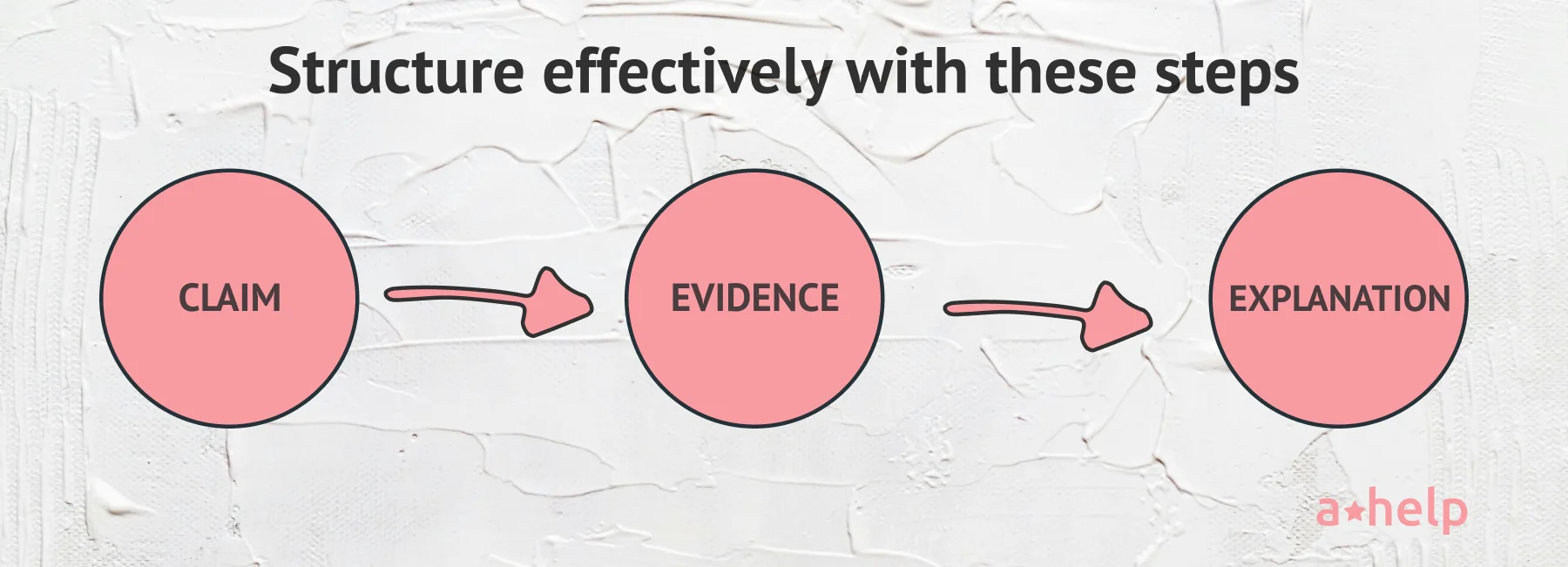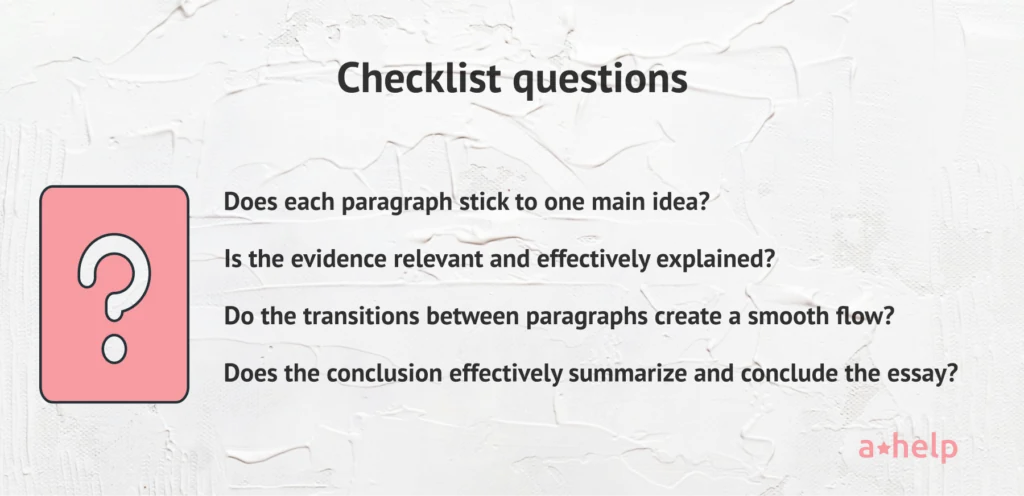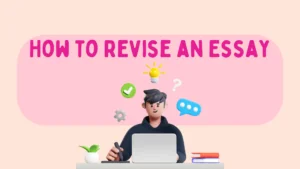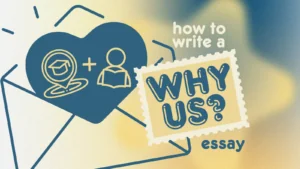Are you the type of person who easily charms everyone at a party with hilarious stories, or do you tend to be more reserved, only sharing thoughts when coaxed? Regardless of your inclination, writing a compelling and informative essay is absolutely within your grasp. While innate talent and flair are advantageous, understanding the fundamentals and framework of the task is the first key to success.

✅ AI Essay Writer ✅ AI Detector ✅ Plagchecker ✅ Paraphraser
✅ Summarizer ✅ Citation Generator
Informative essays are your chance to share knowledge and insights on various topics, from the simplest to the most complex. With a few tips and tricks, you’ll be writing like a pro in no time. So grab a cup of coffee, settle in, and let’s start this literary adventure together. By the end of this guide, you’ll be able to write an effective informative essay, enjoying the process of creating it.
What Is an Informative Essay?
An academic writing style called an informative essay seeks to educate the reader about a certain subject. The writer’s own ideas are left out from the presentation of facts, statistics, and crucial information, allowing the reader to understand and gain knowledge about the subject. The fundamental qualities of an informative essay are its objectivity and dedication to clearly presenting accurate and digestible information.
Students are often assigned informative essays for several reasons. These assignments help develop a student’s research skills, improve their ability to synthesize complex information, and enhance their written communication. Teachers assess these essays based on clarity, coherence, organization, and the depth of provided information. They look for a well-structured presentation of facts that demonstrates the student’s understanding of the topic, and how their writing skills develop. Writing informative essays develops a variety of skills:
Research Proficiency: Students learn to gather information from reliable sources, assessing the relevance and accuracy of data.
Analytical Thinking: By analyzing the gathered information, students learn to recognize and organize essential facts.
Writing Clarity: Students practice communicating complex information in a straightforward and more understandable manner.
Critical Thinking: This type of essay encourages the evaluation of various pieces of information to create a coherent story.
Types of Informative Essays
Informative writing as a genre contains several styles, each designed to express specific types of information effectively. You need to understand that based on your specific assignment, teacher’s instructions, course requirements, or target audience, you need to choose a proper writing strategy to complete the task and land that “A” for the course. Here is a closer review of every category:
🎨 Descriptive Essays: Imagination and Creativity
The name speaks for itself. These essays paint a picture through words. They focus on detailing key characteristics of a character, place, or event, helping readers to visualize the subject vividly. This type of essay uses detailed observations and descriptions to evoke the senses, basically making the reader see, hear, feel, smell, or taste the descriptions provided. For example, a descriptive essay on a historical building would mention its size and location. However, this wouldn’t be enough to describe the building. Therefore, it would also depict its architecture, the texture of its materials, and the atmosphere surrounding it. The goal is to transport the reader to the scene, enhancing their understanding through rich, evocative language.
📐 Process Analysis Essays: Structure and Order
Process analysis essays are step-by-step explanations of how something works or how to perform a task. They are highly structured and chronological, breaking down a process into smaller and more manageable parts. This kind of essay is essential for topics that require detailed procedural knowledge. For instance, a process analysis essay could explain the steps involved in brewing beer at home, from the preparation of ingredients to the fermentation and bottling stages. By detailing each step, the essay teaches the reader about the complexities of the process or how to replicate it themselves.
🔄 Comparative Essays: Differences vs Similarities
Comparative essays examine two or more subjects by comparing their similarities and contrasting their differences. This approach is useful for highlighting the nuances between similar concepts or objects. Through comparison and contrast, the essay discusses how each subject stands related to the others, which can be particularly informative in literature, science, or social studies. For example, a comparative essay might analyze different economic theories, or it might explore the cultural differences between two communities, providing insights into their individual aspects and commonalities.
🔍 Expository Essays: Facts, Evidence, and Explanations
Expository essays are grounded in facts and logical reasoning. They leave no room for the writer’s personal opinions. These writings focus on explaining or defining a topic in a simple and objective way. This type of essay is common in education and the sciences, where clear, factual writing is required to explore causes, effects, and various phenomena. For instance, an expository essay might explore the causes of climate change, describing the scientific consensus and predicting potential global impacts. Expository essays help the reader understand complex topics without any personal bias or emotional rhetoric.
Purposes of Informative Essays
Now, when you’ve familiarized yourself with the types of informative essays, you see that each serves different functions within the wider genre, thus having unique goals and objectives. Nevertheless, they all share inherent tasks: educating, promoting understanding, sparking interest, and establishing a groundwork for further exploration.
| Educating the Audience | Enhancing Understanding |
| The primary goal of an informative essay is to educate its audience about a specific topic. This means presenting information in a way that is accessible and comprehensible to the reader. By structuring information logically and clearly, the essay helps readers learn new concepts, expand their knowledge on a subject, or clarify complicated ideas. For example, an informative essay on a medical condition like diabetes could explain its causes, symptoms, and treatment options, thus providing practical knowledge that could impact the reader’s health decisions. | Informative essays also aim to improve the reader’s understanding by breaking down complex information into smaller parts. This involves using definitions, examples, and analogies that make the issue more relatable and easier to get. For instance, an essay explaining quantum computing might use analogies related to classical computing to help readers form a mental model of the more abstract quantum concepts. These essays give readers the knowledge they need to engage deeper with subjects that they may have previously considered overwhelming or inaccessible. |
| Stimulating Interest and Curiosity | Providing a Basis for Further Research or Action |
| While the informative essay’s primary purpose is to inform, a well-written essay also piques the reader’s interest and stimulates curiosity about the topic. Present information through compelling case studies, interesting anecdotes, or thought-provoking questions and you’re readers are motivated to explore the topic further on their own. For example, an essay about renewable energy technologies might highlight recent innovations or future possibilities, prompting readers to keep up with or even contribute to ongoing advancements in the field. | Informative essays are often a foundation for further learning or exploration. These essays offer a thorough overview of a topic and equip readers with the necessary background to conduct their own research, participate in discussions, or make informed decisions related to the topic. For example, an essay on the ethical implications of artificial intelligence could provide readers with a framework for understanding key debates, which they could then use to formulate their own opinions or policies. |
These purposes underline the potential of informative essays. As such, when writing one of them, think critically about how to present information in a way that educates, engages, and inspires the reader to learn and discover more.
Informative Essay Structure
As we mentioned, when it comes to writing informative essays (or any writing), it all boils down to how you organize your thoughts and ideas. Even the most imaginative fiction writers stick to certain rules and formats. If they didn’t, popular literature wouldn’t have much of an audience, would it? So, let’s make sure we learn how the proper frame of our informative essays should look.
Introduction
The introduction of an informative essay sets the stage for the information that is to follow. It should start with a compelling hook to grab the reader’s attention—this could be an interesting fact, a relevant quote, or a question that triggers curiosity. Following the hook, provide some background information to give context to the topic. The introduction should end with a clear thesis statement that outlines the main focus and purpose of the essay. This statement is critical as it guides the structure of the entire essay.
Tips for the Introduction:
- take time to craft a hook that is directly related to the main points of your essay
- keep your thesis statement precise and focused. This is not the place for vague ideas; the clearer your thesis, the stronger the foundation of your essay.
Body Paragraphs
The body paragraphs form the core of an informative essay, where each section speaks about a different aspect of the topic, aligned with the thesis statement. These paragraphs are the meat of your essay. They provide depth and details that illustrate the subject for your readers. Here’s how to effectively structure and write these paragraphs.
Each section should ideally serve a specific purpose, directly tied to the thesis statement. Start with a clear topic sentence that states the main idea of the paragraph. The simple relation of the sentence to the thesis isn’t enough. It should declare the focus of the paragraph itself, leading the reader through your arguments.
Following the topic sentence, introduce your evidence. This can include statistics, quotes from experts, or factual information from respected sources. This evidence is the backbone of your paragraph and must be presented logically. After presenting the evidence, you should explain how it supports the topic sentence and the thesis of the essay. This explanation helps the reader understand the relevance of the information and how it ties into the larger message.
Each piece of evidence should be discussed thoroughly before moving on to the next point. This approach helps maintain a logical flow, making it easier for the reader to follow your argumentation.
Tips for Body Paragraphs
- Clarity in Topic Sentences: The topic sentence should clearly state what the paragraph will discuss. Remember: it must align with the broader thesis. A focused topic sentence helps prevent the paragraph from veering off into tangential areas.
- Reliable Research and Evidence: It’s critical to use credible and up-to-date sources for your research. Each fact or data point should be accurately cited, establishing your essay as a reliable source of information. This strengthens your argument. Always verify the authenticity of your sources and prefer peer-reviewed journals, books, and reputable websites.
- Logical Organization: Arrange your evidence so that it builds your argument effectively. You might choose to arrange points in order of importance, from least to most critical, or chronologically if discussing a process or historical topic. The key is to maintain a logical progression for better understanding.
- Transitions Between Paragraphs: Use transition words and phrases to connect each paragraph to the next. Transitions help preserve the flow of your essay and can guide the reader from one point to another.
- Focused Information: Keep your paragraphs focused and concise. Long, unwieldy paragraphs can confuse readers and dilute the impact of your evidence. Each paragraph should ideally explore a single main idea. This helps in retaining the reader’s attention throughout the essay.
Conclusion
The conclusion of an informative essay should reinforce the thesis statement and summarize the main ideas. This is your opportunity to restate the significance of the information and leave the reader with a final impression of why this knowledge is important. The conclusion should tie back to the introduction but should not introduce any new information.
Tips for the Conclusion
- Recap the key points briefly and reassert the purpose of the essay.
- Offer a final thought or a call to action if relevant, especially if the topic has practical applications or implications.
Informational Essay Format
Let’s assume you know your topic. Before getting into writing your informative essay, it’s essential to do some profound research. This step is like laying the groundwork for a sturdy building—it’s what gives your essay credibility and makes the writing process smoother. Let’s break down the key steps in the research phase and see how each helps shape your final essay.
Conduct Research
The first step is to gather as much relevant information as possible. Use various sources such as books, academic journals, reputable websites, and expert interviews to get a comprehensive view of the topic. The goal here is not to collect facts but to understand various perspectives and the depth of the subject.
| Why it’s helpful: | Extensive research broadens your knowledge base and provides a solid foundation of facts and figures that support your essay. The more data you have, the better your arguments are backed by evidence, which is important for building credibility with your audience. |
Thorough research equips you with the necessary tools to write an authoritative text, filled with validated information that can persuade and educate your readers.
Take Notes
As you research, take detailed notes on key facts, quotes, and concepts. Develop a system for noting sources to make it easier to cite them accurately in your essay. This might include jotting down page numbers, author names, or URLs.
| Why it’s helpful: | Note-taking helps you organize your thoughts and keep track of critical information. It also makes it easier to outline your essay later because you have all the relevant details at your fingertips. |
With well-organized notes, you won’t overlook valuable information during the writing process. They also help in structuring the essay logically, as you can easily see how different points relate to and support each other.
Track and Organize Your Records
Organizing your research requires extra effort, but it pays off. Create a system to categorize and store information, whether it’s a digital folder system, a set of physical files, or a database. Each piece of information should be easily retrievable with references to the sources.
| Why it’s helpful: | Systematizing your records prevents you from losing important research and saves time during the writing process. It also helps in verifying facts quickly if you need to cross-reference something as you write. |
A systematic approach to organizing your research ensures that the writing phase is smooth and efficient. You can focus more on writing your narrative instead of wasting time searching for information.
Brainstorm Ideas
Once you have a solid understanding of the topic and have gathered sufficient information, begin brainstorming ideas on how to present your essay. Think about potential angles, how to structure your arguments, and the most important points to highlight.
| Why it’s helpful: | Brainstorming allows you to creatively explore different ways to deal with your topic. It helps to develop a unique angle and decide which information is most critical to include. |
Effective brainstorming leads to a more focused and engaging essay. By considering various perspectives and structuring your content strategically, you can craft an essay that not only informs but also captivates your audience.
These steps in the research process are instrumental in preparing you to write a compelling informative essay. By investing time in research and organization, you simplify the writing stage and improve the overall quality of your final essay.
How to Write an Informative Essay
Writing an informative essay involves several steps, from creating an initial draft to refining your text into a finished version. Each step in the process plays a its role in making your essay is clear and compelling.
Rough Draft
Begin by writing a rough draft based on your outline. At this stage, focus on getting your ideas down on paper without worrying too much about perfection. The goal is to end up with a complete first version of your essay, which you will refine later.
The rough draft is your chance to explore how your ideas fit together. It’s a formative stage where you can adjust the flow and structure of your essay based on how your arguments unfold. If you’re prone to making mistakes, this is when it’s acceptable.
Structure Your Body Paragraphs
Your body paragraphs must start with a clear topic sentence that states the main idea of the paragraph. Follow this with a claim, provide evidence to support this claim, and then explain how this evidence relates to your claim.

Edit the Draft
Once your rough draft is complete, revise it carefully. Create a checklist of questions that your essay needs to respond to, based on the assignment’s requirements and your own objectives for the essay. This checklist should be your quality control mechanism to guarantee that every part of your paper contributes effectively to the whole.

Write the Final Draft
After revising the rough draft, write your final draft by incorporating all the changes and improvements you’ve identified. This version should be clean, well-organized, and free of the errors or awkward phrasing found in earlier drafts.
Proofread
The final step is proofreading. Check the document for grammatical errors, typos, and other mistakes. It’s often helpful to read your essay aloud or have someone else review it to catch errors you might have overlooked.
Why it’s critical: Proofreading ensures that your essay is professional and polished. Even minor mistakes can distract from the impact of your writing, so careful proofreading is crucial for maintaining credibility.
As you see, each stage of the writing process builds on the previous one, culminating in a comprehensive and engaging piece that is sure to inform and impress your readers.
FAQ
Follow us on Reddit for more insights and updates.





Comments (0)
Welcome to A*Help comments!
We’re all about debate and discussion at A*Help.
We value the diverse opinions of users, so you may find points of view that you don’t agree with. And that’s cool. However, there are certain things we’re not OK with: attempts to manipulate our data in any way, for example, or the posting of discriminative, offensive, hateful, or disparaging material.